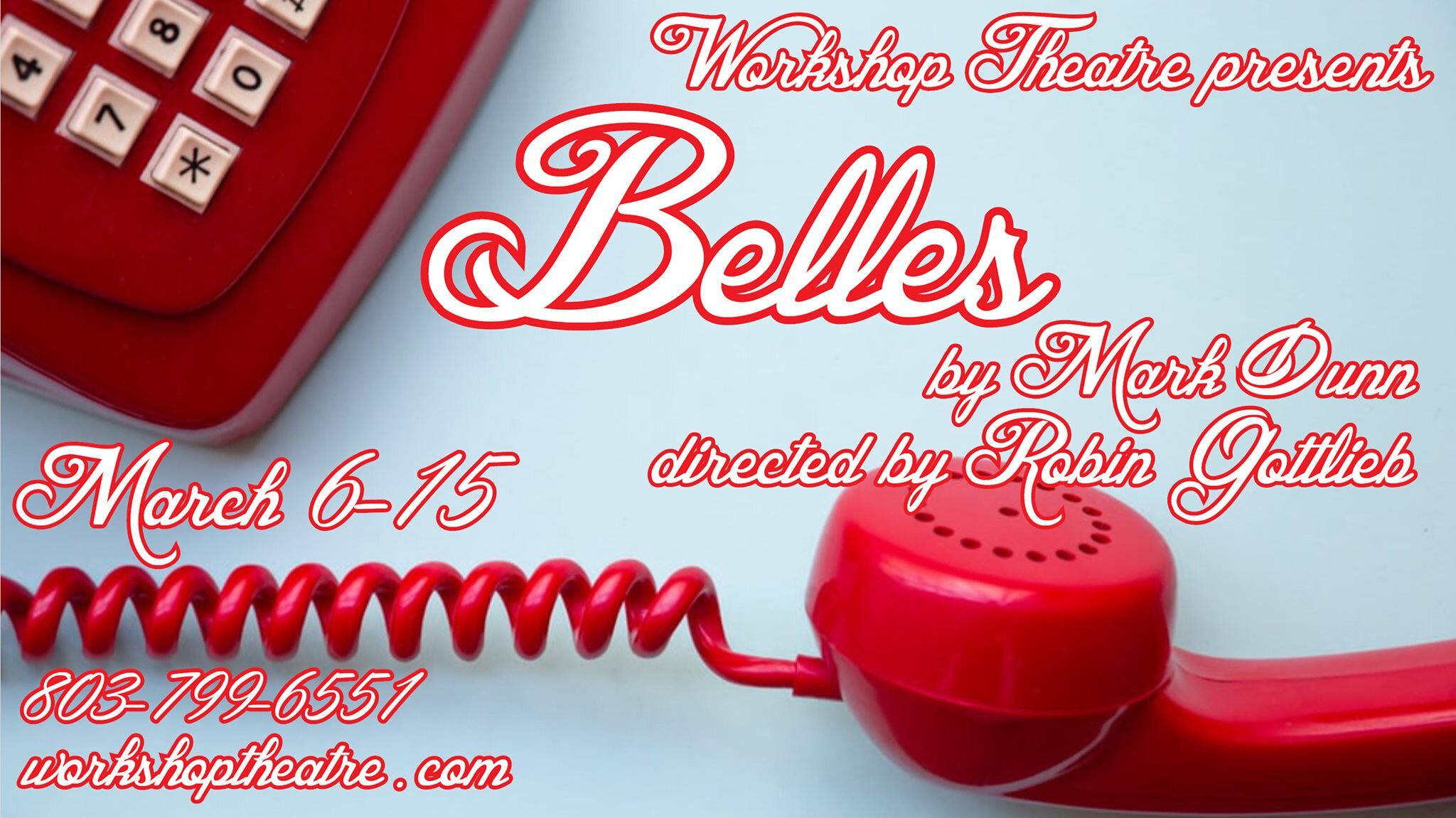I cannot recommend Trustus Theatre’s production of The Prom highly enough. I honestly had no interest in seeing the show, having been so utterly disappointed in the film version. I’m so very glad I got over myself.
Dewey Scott-Wiley has assembled a talented and energetic cast. Trustus stalwarts Kevin Bush, Robin Gottlieb, Jonathan Monk, and Giulia Dalbec are a quartet of self-absorbed and unlikeable Broadway performers who desperately need to change their image(s). “Angie Dickinson” (Dalbec) finds a blurb on social media about a high school prom cancelled by the PTA when it comes to light that student Emma (Liv Moody) plans to take her girlfriend to the dance. The Broadway bunch sees this as their cause célèbre and off they go to Smalltown Indiana to fight homophobia. God help the heartland.
Gottlieb gives us a glorious over-the-top deliciously ham-a-licious Dee Dee Allen, a diva on the downswing. Kevin Bush’s Barry Glickman loafers are light as feathers; he’s as brash and broad as any gay caricature you’ve seen portrayed and utterly dear. Jonathan Monk is a very proud Julliard grad-cum-actor-cum-waiter who resents being remembered for a television sitcom rather than as a “serious actor.” Angie Dickinson (yes) is comedy gold in the hands of Giulia Dalbec. (Watch her closely. She is “on” every moment, wherever she lands onstage.)
And Liv Moody? Where the hell has this woman been? (Actually, she’s been at USC and at Columbia Children’s Theatre.) She is mesmerizing. All she wants is to go to prom with her girlfriend, and suddenly she’s thrust into a spotlight she never wanted. Her Emma is strong and shy and overwhelmed and confused as any high school girl. She made me roar aloud with laughter and made me cry empathetic tears.
There is not a weak link in this cast. Kevin (Ryan Greene) and Nick (Asher Thompson) are the popular jocks, and boyfriends to the counterpart oh so popular cheerleaders Kaylee (Bella Colleti and Shelby (Marie Shenk). The line “my dad’s a lawyer” isn’t in the script, but you know these guys have used it. These four lead the bullying of Emma, and Alyssa (Isabella de Cola), a cheerleader, but not of the same ilk as Kaylee and Shelby. The ensemble (Akex Malvern, Blythe Long, Tripp Hills, Ebony Imani, Isabella Stenz, Lauren Roberts, Josh Kern, and Semaj Whitener) is a tight, well-rehearsed group. Josh Kern has proven himself over and over to be a fearless and willing actor in a number of shows in the Midlands, and he does it again here.
Kristin Claiborne as the PTA President, Mrs. Greene (Alyssa’s mother) and Bobby Rogers as Principal Hawkins gave standout performances. Claiborne is deliciously loathsome as the self-appointed moral guardian of the school; Rogers’ Hawkins is charming, and quite smitten with Dee Dee, but does not allow himself to be starstruck. (The scenes he and Dee Dee share in a booth at “Apple and Bee’s” are excellent).
Janet Kile’s costumes are excellent, each piece perfectly matched the character wearing it. (Emma’s “onesie” pj’s are adorable, and exactly right for that moment in the show.) (I really sort of wanted the butterfly prom dress worn by Blythe Long, but I’d have to lose 40 years and 50 lbs.)
Chris Cockerell’s musical direction is, as always, spot on. From flashy production numbers to the lovely ballad “Just Breathe” every note lands true. Garyson Anthony managed to choreograph a large cast on the small Trustus stage, and it never looked crowded. She and director Dewey Scott-Wiley have mad skills in traffic direction. Heather Hawfield and Scott-Wiley share the scene design, and along with Teddy Palmer’s technical direction they create a delightful pop-up book of locations. Set pieces slide on and off stage to create a locker room, a motel lobby, the aforementioned “Apple and Bee’s,” and Emma’s room. The scene changes are smooth and swift.
The Prom is joyful and fun and never loses the message of acceptance and tolerance. Apparently prejudice and lack of acceptance are a never-ending source of material. It would have been nice for our Broadway crusaders to have been met with at least a couple of sympathetic folks back home in Indiana, or to have gotten a bit of insight earlier on into why Mrs. Greene is so vehement in her opposition to Emma’s attendance at prom. However, those points have no impact on the success of this show.
Due to the procrastination of this reviewer, there are only a few opportunities left to see this jewel of a show. It runs through Saturday, July 13 with curtain at 8:00 p.m. Buy your best girl/guy a wrist corsage and treat yourself to this one. You won’t be disappointed.
Editor’s note: We apologize for the late posting of this excellent review.
































